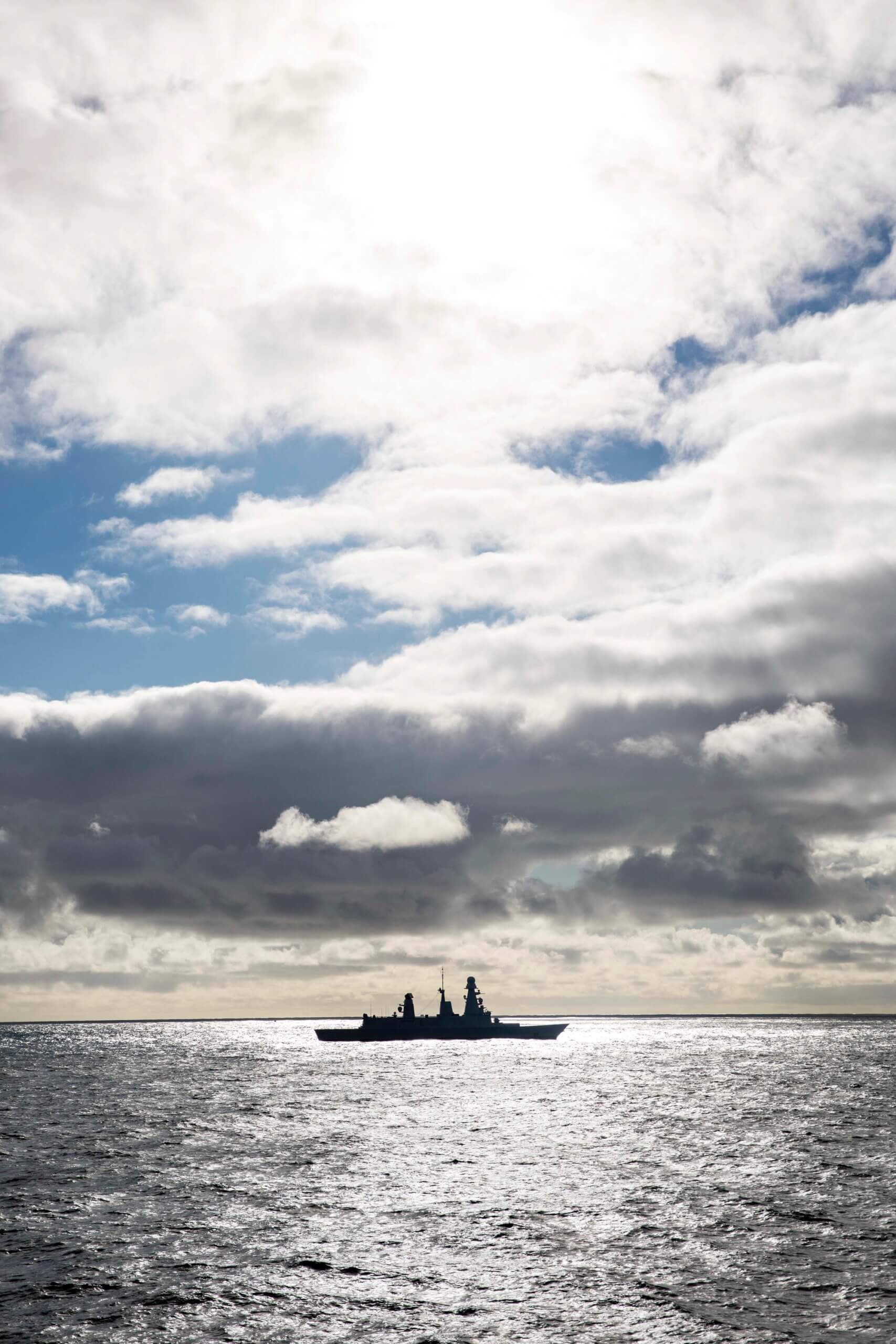
A promising new development aims to overcome naval surveillance radar line-of-sight restrictions to improve ballistic missile detection and engagement.
Thales shared details of the Plot Level Data Exchange and Fusion (PLDEF) initiative involving the Dutch and French navies during a visit to the company’s facilities in Hengelo in the eastern Netherlands. PLDEF was first demonstrated in 2021. The demonstration took place during the North Atlantic Treaty Organisation’s (NATO’s) At-Sea Demo/Formidable Shield exercise. NATO says this was the largest live-fire integrated air and missile defence exercise performed by the alliance that year.
Along with several other vessels, the exercise included the Koninklijke Marine (Royal Dutch Navy) De Zeven Provinciën eponymous class frigate. She was joined by the Marine Nationale (French Navy) Forbin ‘Horizon’ class frigate. The Dutch vessel is equipped with Thales SMART-L L-band (1.215 gigahertz/GHz to 1.4GHz) and APAR X-band (8.5GHz to 10.68GHz) naval surveillance radars. The Forbin has a Thales S-1850M L-band naval surveillance radar. During the exercise, the two ships demonstrated they could share radar plots which each other. Tracks represent individual echoes from targets detected by radar. The radar’s software assembles these tracks into a plot. The plot will contain metadata on the target such as velocity, altitude and bearing. It may also be overlaid with target identity information derived from the radar’s identification friend or foe interrogator. During the 2021 experiments PLDEF data was shared between the ships using the Link-16 (960MHz-1.215GHz) Tactical Datalink (TDL) and standard NATO SATCOM links.
Merging the Picture
PLDEF is an important capability. It lets vessels which may be separated by hundreds of nautical miles to use SATCOM and other links to share target plots. This is particularly important if two or more vessels are tasked with detecting ballistic or hypersonic missiles launched from afar. The target could be beyond the radar horizon of the ship tasked with intercepting this threat with her surface-to-air missiles. The SMART-L has a range of 35 nautical miles/nm (65 kilometres/km) against surface-to-surface missiles. This assumes these targets have a low radar cross section and are flying at low altitude. That said, the radar can track ballistic missile targets at ranges of circa 932nm (1,500km) once the missile appears above the horizon. The S-1850M has a range of circa 300nm (480km) for air targets.
A SMART-L-equipped warship could be around 900nm (1,667km) downrange of another equipped with the S-1850. The first ship could track a ballistic missile and share its radar plot with the other vessel even through the latter’s radar has yet to detect the target. PLDEF lets the two ships combine their radar pictures. They can then coordinate the target’s interception based on which vessel is best placed for the engagement. In a nutshell, the PLDEF works to artificially overcome physics-imposed limits on some radars’ line-of-sight detection range. Sharing plot information is a significant step vis-a-vis traditional Tactical Data Links (TDLs) like Link-11 and Link-16 primarily restricted to sharing track information.

Link Budget
Thales officials said that the data burden imposed on the transfer of this information between radars is noticeably less than those of the US Navy’s Cooperative Engagement Capability (CEC). The CEC networks disparate US Navy sensors, battle management systems and weapons on aircraft and ships. It provides a common, rich tactical picture which can be shared within a task force. Details on CEC data rates are classified. Nonetheless, the officials assured Armada that the link budget required to share PLDEF plots is noticeably less than CEC’s allocation.
Company representatives said that the PLDEF provides “better detection performance, better tracking accuracy and better tracking continuity” than hitherto possible with conventional TDLs. They added that testing of the PLDEF architecture at sea will continue. Thales declined to provide any information as to whether PLDEF will form part of the French Navy’s evolving CEC-like architecture. Ultimately, “it is up to the navies to decide how they want to move this forward,” the representatives concluded.
by Dr. Thomas Withington












